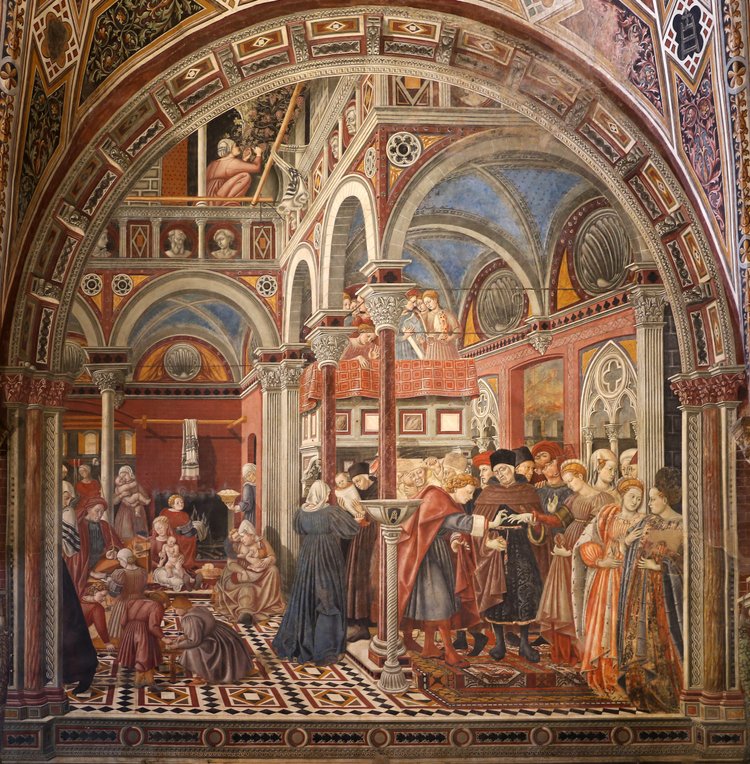
Performing Magnificence: Artistic Practice, Architectural Invention and Persuasion in the Pellegrinaio of Santa Maria della Scala, Siena
Mon 24 January 2022
18:30 -20:30
The time span between the mid-fourteenth and mid-fifteenth century saw an increase in the amount and complexity of architectural structures included in painting, proposing settings that demonstrated a more consistent engagement with built structures, whilst at the same time including innovative designs. This shift, where volumes became more credible, is often explained in terms of artists’ increased awareness of three-dimensionality.
Yet, interpretations limited to the ‘pictorial space’ trope obscure the inventiveness of painted structures, undermining their architectural value as they reinforce the disciplinary boundaries between art and architectural history. While scholarship is becoming increasingly aware of this, dedicating more attention to architecture in painting, our understanding of the interplay of narrative and architecture, and of artists’ early contribution to architectural practice is still limited. Addressing this lacuna appears especially urgent when we consider the prominence and innovativeness of architectural structures in early fifteenth-century painting. This talk discusses the fresco cycle in the Pellegrinaio of the hospital of Santa Maria della Scala in Siena, painted between 1441 and 1444 by three different artists, and featuring some of the most striking, and yet understudied architectural settings of the period. Designed to showcase the hospital’s illustrious history and describe its charitable roles within the Sienese community, the frescoes negotiate historical fact, legend, sacred and secular subject matters, establishing the hospital’s authority and prestige within the city’s urban fabric. This talk proposes that the cycle’s markedly architectural settings are an integral part of this endeavour, connected to the Sienese government’s aspirations towards magnificence.
A platform for architectural exploration, the Pellegrinaio’s settings propose ambitious structural and ornamental solutions, blending gothic and classical architectural forms in ways that precede similar elaborations in built structures and challenge the aesthetic and structural potential of contemporary architecture. As it investigates how these artists’ architectural imagination fed into architectural practice, offering an insight into the work of later key figures like Giuliano da Sangallo, this research uncovers the increasing importance attached to architectural forms as a kind of cultural currency, reflecting on the relationship between invention and prestige, power and persuasion.
Livia Lupi is a Leverhulme Trust Early Career Fellow at the University of Warwick. Her research focuses on the intersection between artistic and architectural practice in early modern Europe, the relationship between rhetoric and the visual arts, and exchanges between Western Europe, the late Byzantine empire and the Muslim world. Her book, Painting Architecture in Early Renaissance Italy: Innovation and Persuasion at the Intersection of Artistic and Architectural Practice, was submitted to publishers in September 2021. She is now collaborating with the Sir John Soane Museum in London on a digital exhibition provisionally entitled “Before the Painter-Architect.”

General Info
Organiser